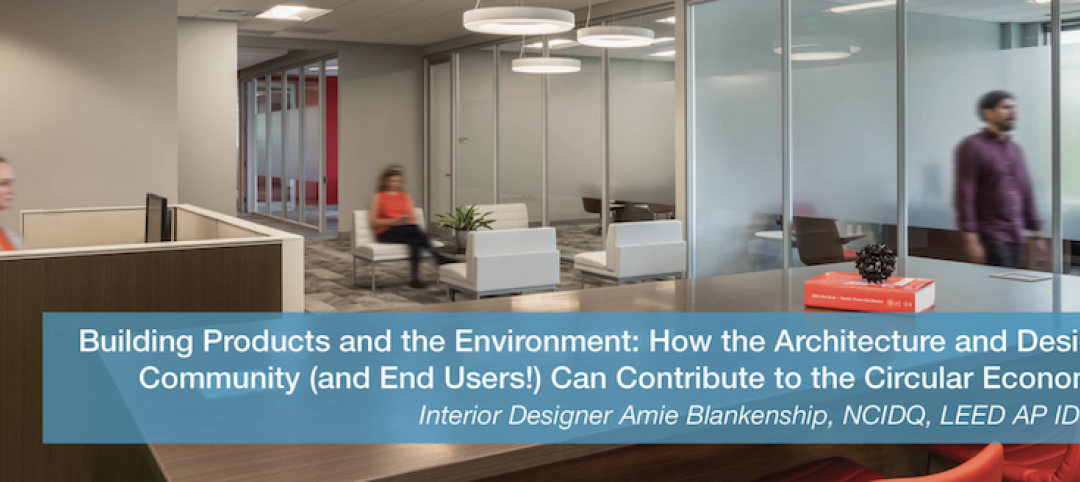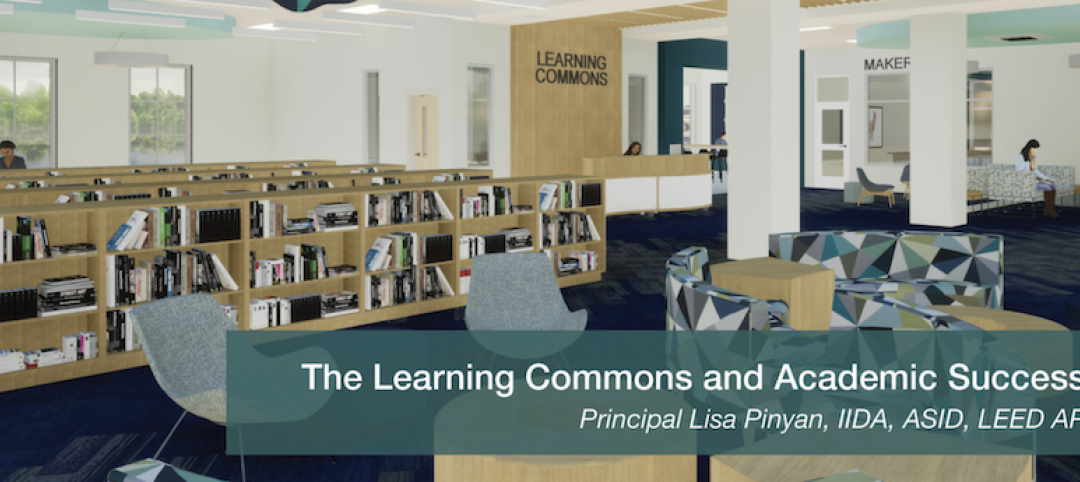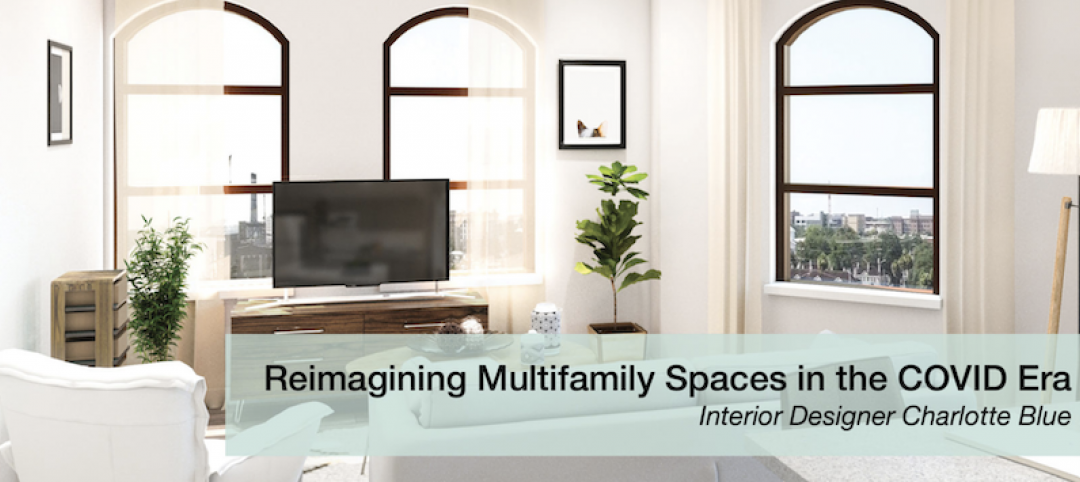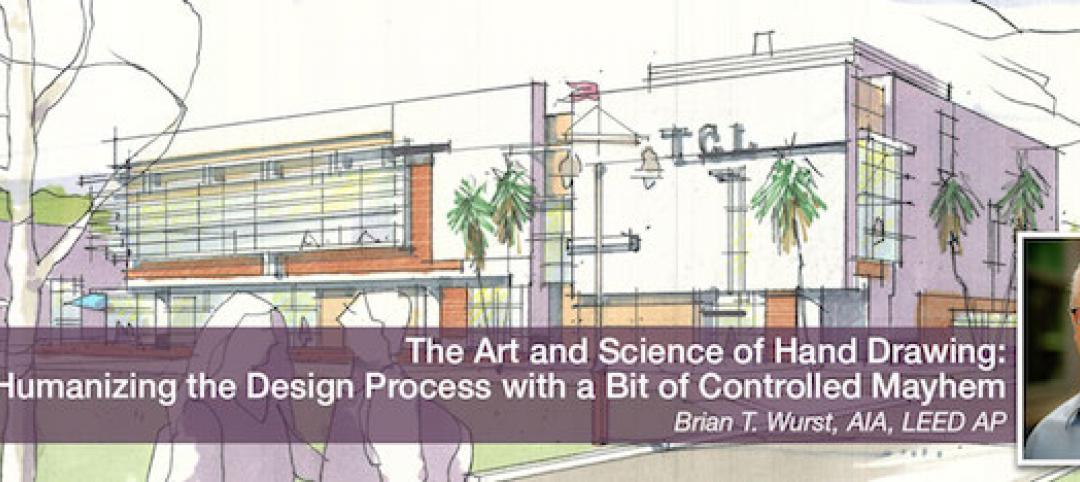The first rule of high performance design is to create spaces that are beautiful and beloved by all stakeholders including the client, users, and community. This will ensure the building is preserved, relevant, and maintained for 25, 50, 100, or 200 years.
The second rule (more of a question) is this: what are we bringing to the table outside of solving a program and delivering the project on schedule and budget? The AIA traditionally had awards for design and awards for sustainability; the current trend is that these are inseparable. Only 15 projects have been awarded an Institute Honor Award and a COTE Top 10 award. Our challenge is to change this statistic through integrative, rigorous design.
It is no secret that 40% of the US energy consumption occurs in the building sector, and the US public water supply consumes 39 billion gallons of water a day without including irrigation. The US loses upwards of 500 billion dollars yearly in loss of work productivity and, given that US workers spend 87% of their time indoors, there is immense room for building improvement. We as signatories of the AIA 2030 commitment have an ethical obligation to go above code minimums towards a carbon neutral future. It is our responsibility as architects to envision a sustainable future and actively make effort on every project to achieve the goal.
High performance design is the creative and innovative maximization of constraints, meaning that high performance architecture is not prescriptive, it is not a rating system, and it is not optional. When we reorient perspective, this process becomes as important as keeping rain water out of the building, meeting fire codes, ADA, etc. High performance design will then become second nature to the design process.
These ideas transcend aesthetics, budget, and typology.
Here are some lessons learned from my experience working on LEED Platinum, Net Zero, and Living Building projects spanning four climate zones, multiple building typologies, and a range of budgets:
Design Excellence
We as artists are uniquely presented with the opportunity to envision a space that does not currently exist. We must ask ourselves how these spaces can exceed expectations by creating a living building that looks to the future and not the present. How does the building advance architectural discourse? How does it inspire its users? How does it expand a brand or identity past its current aspirations? One major aspect of resiliency is to design for future users, social constructs, and adaptability. This means looking past the present and making informed decisions on predictability- true timelessness.
Average design addresses the “now” with program-based solutions and code minimum execution.
Good design elevates aesthetics, achieves above-average performance goals, and sets itself directly above peers.
Design excellence addresses the future, exceeds goals, incorporates artistic narratives, sets precedent, inspires, transforms, and adds intrinsic value with tangible and intangible means.
My favorite building case study is the Salk Institute (1965), and it is the perfect measuring stick for design excellence. Jonas Salk said the building had the ability to “guess tomorrow” while facilitating scientific discovery. It perfectly blends contextual design, site ecology, functionality, and poetic artistry. The whole is greater than the sum of its parts.
Architecture of Place
Contextual design must move beyond the discussion of the aesthetic and move towards the discussion of ecology. The invention of air conditioning has led to decades of poor design decisions that seek to fight the ecosystems in which buildings are located. The first step towards meeting the 2030 goal is to study the microclimate of a site in depth. This includes orientation, solar, wind, landscape, storm water, rain, seasons, and potential weather catastrophes. We must not only study these conditions, but also nonnegotiably incorporate strategies to work with them. Each subsequent design decision should take into consideration each of these values as opportunities and allow them to artfully mold everything from the exterior form to the interior space. Artistic schemes must seek to harmonize with all ecological metrics to ensure that the building works with the context. This creates a system of checks and balances that will allow for quick and easy decision making throughout the design process.
Economics of Design
The economics of high performance design are tied directly to the innovative poetic concepts that drive design. Even the most technologically sustainable buildings in the world can be achieved with a 15-30% initial cost increase. The true goal, however, is to increase building performance by up to 50% through simple passive design including site orientation, program placement, formal studies, window placement, facade articulation, natural day lighting, light power density, water usage, natural ventilation, landscape design, and detailing. These strategies involve a 0% initial cost increase. This approach simply takes all the resources already committed to the project and rearranges them through an ecological lens. The result is a building form, geometry, and aesthetic that is un-VE-able. (yes, I made that word up.) Aesthetics can no longer be evaluated by personal taste only; a building must perform AND be beautiful. Design principles and the functional high performance design principles can be so integrated that you cannot have one without the other. This approach allows for economic conversation to move away from technological add-ons and towards holistic passive integration that reiterates design narratives with functional solutions. Great architecture is the distillation of many constraints towards a singular vision. All building typologies, all scales, and all budgets can be ingrained with these passive ideas.
Schedule of Values
High performance buildings need a reevaluated schedule of values. The way to increase performance without increasing cost is to move money on the spreadsheet and maximize specific areas of the building. This involves working closely with consultants and contractors to find the biggest ‘bang-for-your-buck’ areas. We must challenge preconceived notions, looking beyond what has already been done and become more innovative. For example, by using passive design strategies and creating dynamic façade systems, the facade might cost more but the mechanical and electrical systems will be cheaper due to efficiency. Detailing is another area where large gains can be made. Succinct material palettes, unitized smart construction systems, and removal of unnecessary detail can greatly decrease cost and complexity by decreasing on site trades through consolidation. The goal is to create extraordinary spaces using ordinary means and methods. True alchemy.
Goal Setting
Each project should start with high performance design goals to be net zero energy, net zero water, net zero carbon, 100% storm water mitigation, 100% of program spaces day lit, 100% native plants, zero VOCs, maximized recycled material content, no red list materials, and design excellence. By re-framing the mindset to start here, the process becomes reductive and subtractive instead of reactive and additive. Once constraints and ideas begin to form, the sustainable narrative will start to emerge through the distillation process. While every metric more than likely cannot be met, the goals will help facilitate an integrative design that results in the highest performing building within a set of defined constraints. If a building goes through this process and ends up 30% better than code in every metric, then that building is still an absolute success. But if the goal is to start at 0% and reach 30% without exploring whether it could be 100%… then that is not a successful strategy. All metric aspects of a building need to be recorded and quantified before construction, after construction and after occupancy through user-based post occupancy reports. That will allow designers to learn from their success, mistakes and have tangible evidence-based knowledge for presentations and proposals for future clients.
Elevating Baseline Specifications
Building products and contractors play a crucial role in the execution of high performance buildings. We as architects can support this process by making sure that our specifications for every project include performance-based criteria for low flow water fixtures, low or zero VOCs, LED light fixtures, and high recycled content, and push for true transparency in the form of health product declarations and environmental declare products. Materials should also be considered based on their geographical location in relation to the product. Not only does this reduce embodied energy, but it also further promotes the local economy. I believe that the construction industry and the product manufacturers will continue to positively respond.
Committee on the Environment
Rating systems have long been a controversial topic for designers and clients alike due to the paperwork cost. Buildings that were LEED certified before Version 4 could be unsustainable buildings, and there are certainly buildings without any certification that are high performers. The Living Building Challenge is the only 100% indicator of a true high performing building and only 15 buildings in the world have achieved this. Code is not what the profession should be designing towards; the latest published version of the IEC (2018) should be the absolute minimum, though it is not the currently adopted version of any given municipality. I have found that using the COTE measures for projects is the best route for achieving integrative design. If every project is cross-referenced with the metrics on the following 10 points, the profession will be in a much better position to meet the 2030 challenge while simultaneously elevating design excellence. The AIA Committee on the Environment has case studies of every awarded building, and a toolkit for assisting projects from concept design through construction documents.
Design for Integration
Design for Community
Design for Ecology
Design for Water
Design for Economy
Design for Energy
Design for Wellness
Design for Resources
Design for Change
Design for Discovery
Achieving more successful architecture is as much a project management problem as it is an execution problem. I feel very confident that the Southeast is the next prime market for high performance design and LS3P will be leading the way. Luckily, we do not have to reinvent the wheel, we just need to make it better. We have the tools and knowledge to change the processes of creation, and we need to use them without waning. Meaningful change arises through steadfast convictions.
More from Author
LS3P | Apr 7, 2021
How the architecture and design community can contribute to the circular economy
The goal of the circular economy is to keep materials in circulation through reusing, repurposing, repairing, or reimagining them.
LS3P | Feb 22, 2021
The learning commons and academic success
A vibrant, modern Learning Commons can draw students in and make learning fun.
LS3P | Aug 17, 2020
Covid-19 and campus life: Where do we go from here?
Campus communities include international, intergenerational, and varied health-risk populations.
LS3P | Aug 10, 2020
Reimagining multifamily spaces in the COVID era
Multifamily developments pose unique challenges and opportunities.
LS3P | Mar 29, 2019
Designing for resiliency: Lessons learned from Hurricane Florence along the Carolina Coast
Resilient design principles will be critical in preparing our communities for future storms, writes LS3P's Charles H. Boney, FAIA.
LS3P | Dec 10, 2018
The art and science of drawing: Humanizing the design process with a bit of controlled mayhem
Hand drawing reveals a dimension beyond those available in a CAD drawing or digital rendering.
LS3P | Jan 25, 2018
Cost estimating for K-12 school projects: An invaluable tool for budget management
Clients want to be able to track costs at every stage of a project, and cost estimates (current and life cycle) are valuable planning and design tools, writes LS3P's Ginny Magrath, AIA.













